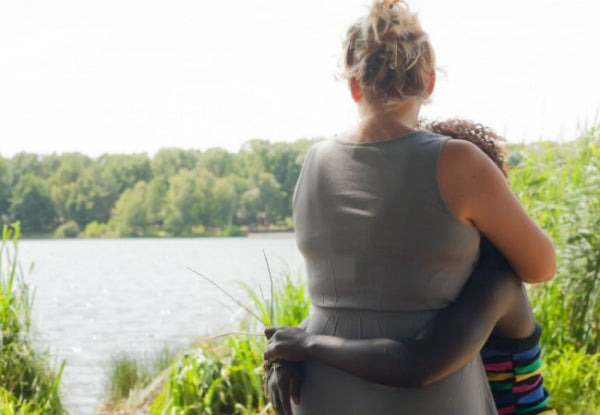Positive Parenting 101: Behavior as Teachable Moments
When I was first learning about positive parenting, I admit that I was confused. If I didn’t punish poor behavior, wasn’t I being permissive? How would my kid learn what was acceptable and what wasn’t if there were no “consequences?” I loved the idea behind the philosophy – raising my sons in a positive, loving environment where we focused on building trust and strong relationships. It sounded great on paper, but I didn’t understand how to actually put it into practice. I didn’t know what to do when my kid misbehaved.
My shift came when I finally understood that behavior was communication – and wrongful behavior was a cry for help from my child. That’s when positive parenting clicked for me. Before I discovered positive parenting, I was constantly asking “which consequence fits this behavior?” or “how long should I punish him for this?” Now, when a problem arises, I ask “What is this behavior telling me and what does my son need?”
That is a huge shift! I stopped seeing my son’s “misbehavior” as a punishable moment and started seeing it as a teachable moment. The reason I put misbehavior in quotation marks is that it’s a mere judgment, and part of my shift was that I really made an effort to stop judging my children based on fleeting actions driven by strong emotions and an underdeveloped brain. For example, what I had misjudged as defiance from my three year old turned out to be emotional pain. He was dealing with a new baby brother, loss of time with mommy, and a confusing new role as “the big boy” even though he was still so very little. Looking past the behavior and seeing the hurt driving it stopped time-outs, behavior charts, and other behavior management systems in their tracks and helped me understand what I had to do to heal the hurt, which was empathize, reconnect, and reassure.
Viewing behavior as teachable moments helps you shift away from using punishments that miss the mark because they don’t deal with the underlying emotions or thoughts driving the behavior. This also helps you avoid permissiveness because you are still focused on fixing the problem. You aren’t just waving it off as something your child can’t control. By using it as a teachable moment, you’re automatically focused on the word “teachable,” and that’s where the positive parenting magic is! It’s really about teaching what’s right and acceptable instead of punishing what’s wrong. It’s about empowering your child with tools and skills to really do better, not just to stuff those feelings down or hide his behavior from you.
To turn behavior issues into teachable moments, ask yourself two questions.
What is my child’s behavior telling me?
What does my child need right now?
It isn’t always immediately apparent what is driving your child’s behavior, so a good place to start to determine if your child’s basic needs are being met. Those needs include:
- Safety and security
- A warm, loving environment
- Feeling loved and liked
- Feeling attached or connected to primary caregivers
- Structure
- Consistency
- Good nutrition
- Adequate sleep
- Exercise
- Positive role models
- Feeling valued, respected, and understood
- Feeling capable
- Freedom to express feelings
- Emotional support
Finally, what is it that your child needs right now? What can you teach her or what need can you meet that will help her do better? We are here to teach and guide our children through childhood, and we become better able to do that when we ask the questions that get to the root of the problem rather than simply asking, “How long should I take away your electronics?” The key to good behavior isn’t fearing good punishments but feeling good about oneself, one’s relationships, and one’s place in the world.
source: Rebecca Eanes


